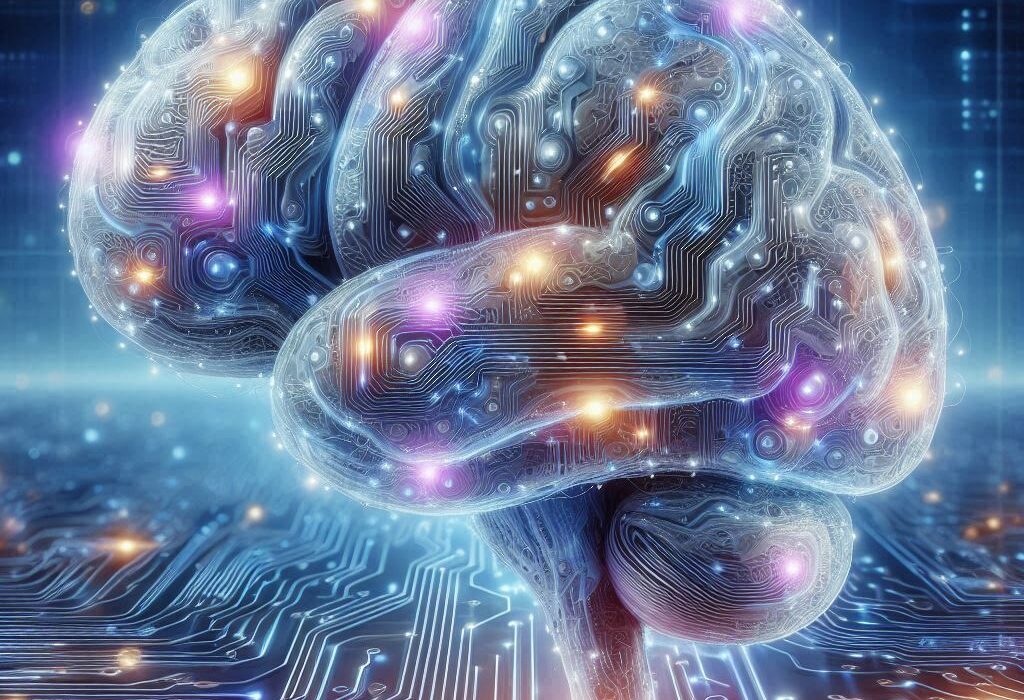In an era where digital devices dominate nearly every aspect of life, the boundary between technology and the human mind has grown increasingly blurred. Smartphones, social media, streaming services, and online work platforms have made it nearly impossible to escape the digital world. While technology has revolutionized communication, learning, and productivity, it has also introduced a host of psychological and neurological consequences. The constant connectivity that once seemed empowering now often feels exhausting.
The term digital detox has emerged as a response to this overload—a conscious effort to disconnect from screens and reconnect with the world offline. It’s not about rejecting technology altogether but rather about regaining balance and control over its use. Understanding how technology affects the mind and learning to mitigate its negative impacts are essential for preserving mental health, focus, and well-being in the digital age.
The Evolution of the Digital Age
Over the past three decades, digital technology has evolved from a novelty into a necessity. The rise of the internet, mobile devices, and social media has transformed how people live, work, and interact. In 2000, only a fraction of the world’s population had access to the internet. By 2025, nearly two-thirds of humanity is expected to be online, with billions of devices connected in what’s known as the Internet of Things.
The smartphone symbolizes the pinnacle of this transformation. It is not merely a communication tool—it’s a portable computer, entertainment hub, personal assistant, and social connector. Its convenience and versatility have made it indispensable, but also dangerously addictive. Studies have shown that the average person checks their phone more than 100 times a day and spends over seven hours daily staring at screens.
The digital revolution has undoubtedly enhanced human potential. It allows for instant access to knowledge, remote collaboration, and global interaction. Yet, this very ubiquity of technology has led to cognitive overload, social fatigue, and psychological dependency. The human brain, evolved to adapt to slower, more predictable environments, now struggles to process the constant influx of digital stimuli.
The Psychology of Digital Addiction
The human brain is wired to seek pleasure and reward—a mechanism essential for survival. However, modern technology exploits this system in ways that traditional habits never could. Social media, video games, and streaming platforms are intentionally designed to trigger dopamine release, the neurotransmitter associated with pleasure and motivation. Each notification, like, or message provides a small burst of dopamine, reinforcing the behavior and creating a cycle of craving and reward.
This neurochemical loop mimics the mechanisms of addiction seen in gambling or substance abuse. The brain begins to associate online interaction with instant gratification, leading to compulsive use. When deprived of these digital rewards, users often experience withdrawal-like symptoms such as anxiety, irritability, and restlessness.
Psychologists refer to this phenomenon as behavioral addiction, a dependency not on a chemical substance but on the behavior itself. Digital addiction encompasses several forms—social media addiction, internet gaming disorder, and compulsive smartphone use. The underlying psychological mechanisms are similar: variable reward schedules, social validation, and fear of missing out (FOMO).
Social Media and the Illusion of Connection
Social media platforms like Facebook, Instagram, TikTok, and X (formerly Twitter) have fundamentally changed how people connect and perceive each other. They promise community and belonging but often deliver the opposite—loneliness and comparison.
One of the main reasons is the curated nature of online life. People share idealized versions of themselves, filtered through perfection and performance. As a result, users constantly compare their real lives to others’ highlight reels, leading to dissatisfaction and lowered self-esteem. Studies published in journals such as Cyberpsychology, Behavior, and Social Networking have linked heavy social media use with higher rates of depression, anxiety, and body image issues.
Another psychological trap lies in the intermittent reinforcement system built into social media platforms. Every like, comment, or share acts as a variable reward, unpredictable and addictive. This uncertainty compels users to check their devices repeatedly, hoping for another hit of validation. Over time, this erodes attention span and increases anxiety.
Paradoxically, while social media was designed to connect people, excessive use often leads to social isolation. The constant digital engagement replaces genuine face-to-face interactions with superficial virtual exchanges. Real relationships, which require empathy and presence, are replaced by the illusion of connection through screens.
The Neurological Impact of Constant Connectivity
The human brain is highly adaptable, constantly rewiring itself in response to environmental demands—a process known as neuroplasticity. While this adaptability allows for learning and growth, it also means that chronic exposure to digital stimuli can reshape neural pathways in harmful ways.
Research from neuroscientists has shown that heavy screen use alters the brain’s structure and function. Areas involved in attention, decision-making, and emotional regulation are particularly affected. The prefrontal cortex, responsible for executive functions like focus and impulse control, shows decreased activity in individuals who spend excessive time multitasking online.
Moreover, constant digital stimulation floods the brain with dopamine, dulling its sensitivity to natural rewards such as reading, exercising, or spending time outdoors. Over time, this leads to diminished motivation and an inability to sustain deep attention—a phenomenon known as digital-induced attention deficit.
The hippocampus, the region involved in memory and learning, also suffers. Studies using MRI scans have found that frequent digital multitasking can impair memory retention and reduce gray matter density in the hippocampus. This is particularly concerning for young people, whose brains are still developing and are more susceptible to environmental influences.
Attention Fragmentation and Cognitive Overload
One of the most significant cognitive consequences of digital overuse is attention fragmentation. Modern life is filled with pings, alerts, and notifications competing for mental space. The average office worker is interrupted every few minutes by messages or app notifications, making it difficult to maintain focus on a single task.
Every time we switch tasks—say, from checking an email to scrolling through social media—the brain incurs a cognitive cost. This constant task-switching depletes mental energy and reduces overall productivity. The illusion of multitasking hides the reality that the brain can only focus on one cognitively demanding activity at a time. What we perceive as multitasking is actually rapid task-switching, which decreases performance and increases stress.
Neuroscientific studies have shown that heavy digital multitaskers perform worse on tests of attention and memory. The continuous partial attention mode—where one’s focus is divided among multiple digital streams—creates a state of perpetual distraction. This undermines the capacity for deep work, creativity, and critical thinking.
The Emotional Toll of Digital Overload
Beyond cognition, technology has profound effects on emotions and mental health. The digital environment amplifies certain emotional states while suppressing others. For instance, the constant exposure to news updates, online conflicts, and negative social comparisons can trigger chronic stress responses.
The fear of missing out, or FOMO, creates a sense of inadequacy and social anxiety. Users feel compelled to stay online to keep up with trends, messages, or social events. This continuous engagement disrupts emotional regulation, leading to mood swings, irritability, and burnout.
Moreover, the blue light emitted by screens interferes with the body’s natural circadian rhythm, suppressing the production of melatonin, the sleep hormone. Poor sleep quality is closely linked to depression, anxiety, and decreased emotional resilience. When sleep is compromised, emotional reactivity increases, creating a feedback loop between digital use and mental distress.
Technology and the Adolescent Brain
Adolescents and young adults are particularly vulnerable to the psychological effects of digital overuse. The teenage brain is still developing, especially in regions responsible for impulse control, emotional regulation, and decision-making. The introduction of smartphones and social media during this critical developmental window can have lasting consequences.
Research from the American Psychological Association shows that heavy social media use among teens correlates with higher rates of anxiety, loneliness, and suicidal ideation. The pressure to maintain an online persona, receive likes, and avoid exclusion contributes to chronic stress and insecurity.
Furthermore, digital interaction often replaces outdoor play, physical activity, and face-to-face communication—all of which are essential for healthy emotional and cognitive development. The overstimulation from digital environments can desensitize the brain to slower, more meaningful experiences, diminishing attention span and patience.
The Paradox of Digital Productivity
Technology was supposed to make humans more productive, efficient, and informed. Yet, paradoxically, it often leads to the opposite. The same devices that help us work faster also introduce constant interruptions. The boundary between work and leisure has eroded, creating a state of digital presenteeism—being constantly available but rarely focused.
Remote work, accelerated by global events like the COVID-19 pandemic, has further blurred these lines. While digital tools enable collaboration across time zones, they also create a culture of constant checking and instant response. The result is cognitive exhaustion, known as digital fatigue.
This phenomenon highlights the importance of intentional digital management. True productivity depends not on doing more but on doing better—on preserving the depth of thought and creativity that constant connectivity tends to erode.
The Physiology of Stress in the Digital Era
Chronic exposure to digital stimuli activates the body’s stress response. Each notification, email, or news alert can trigger a mini spike in cortisol, the stress hormone. Over time, this constant low-level activation keeps the body in a state of heightened alertness.
Prolonged stress disrupts the autonomic nervous system, leading to symptoms such as headaches, insomnia, muscle tension, and digestive problems. It also weakens the immune system and contributes to long-term health conditions such as hypertension and cardiovascular disease.
Psychologically, the inability to disconnect fosters feelings of overwhelm and helplessness. The mind becomes conditioned to expect constant stimulation, making stillness and quiet uncomfortable. This state of digital hyperarousal prevents the body and mind from fully relaxing, perpetuating fatigue and anxiety.
Reclaiming Attention Through Digital Detox
Digital detox is not about renouncing technology entirely—it is about restoring balance. It involves deliberate periods of disconnection to reset the brain’s reward system, improve focus, and strengthen emotional well-being. The idea is to reclaim control over technology rather than letting it control us.
Scientific studies have shown that even short digital breaks can have measurable benefits. Reduced screen time improves sleep, enhances concentration, and lowers stress levels. It allows dopamine receptors in the brain to recalibrate, restoring sensitivity to natural rewards.
A successful digital detox begins with awareness—recognizing how technology is used and how it affects the mind and emotions. Setting boundaries, such as device-free meals or no-screen hours before bedtime, can significantly improve mental clarity. Engaging in offline activities such as reading, exercise, and spending time in nature helps the brain recover from digital overstimulation.
The Science of Mindful Technology Use
Mindfulness, the practice of paying attention to the present moment without judgment, offers a powerful approach to managing digital habits. When applied to technology use, mindfulness helps individuals become aware of their impulses to check devices, scroll aimlessly, or respond instantly to notifications.
Neuroscientific research has shown that mindfulness meditation strengthens the prefrontal cortex and enhances self-regulation. It reduces compulsive behavior by breaking the automatic reward cycle associated with digital use. By observing one’s digital urges with awareness, it becomes easier to choose deliberate actions instead of reflexive ones.
Mindful technology use also involves setting intentional goals. Instead of opening a phone out of boredom, one can define a specific purpose—such as reading an article or sending a message—and then disengage once the task is done. This simple shift from reactive to purposeful use can dramatically reduce digital distraction.
The Role of Nature in Digital Recovery
Nature provides a powerful antidote to digital overload. Numerous studies have shown that spending time in natural environments restores attention, reduces stress, and improves mood. The attention restoration theory suggests that nature replenishes depleted cognitive resources by engaging the mind in soft, effortless focus.
In contrast to the rapid, fragmented stimuli of digital media, natural settings offer slow, rhythmic patterns that synchronize with the brain’s intrinsic rhythms. Activities like walking in a park, gardening, or simply observing natural scenery activate the parasympathetic nervous system, promoting relaxation and emotional balance.
A digital detox that incorporates time in nature helps recalibrate the senses. The absence of constant notifications allows the brain to reconnect with the body and the environment, fostering mindfulness and creativity.
The Social Dimension of Digital Detox
Digital detox is not just an individual endeavor; it is also a social and cultural one. Many of the pressures that drive digital overuse—constant availability, social comparison, and online performance—are reinforced by societal norms.
Creating a culture of digital well-being requires collective action. Workplaces can promote healthier habits by encouraging screen breaks, limiting after-hours communication, and valuing focus over constant responsiveness. Schools can integrate digital literacy programs that teach young people how to use technology responsibly. Families can establish shared boundaries, such as device-free dinners or offline weekends.
Social support is crucial in sustaining digital balance. Participating in group activities that do not involve screens—sports, arts, or volunteering—rebuilds real-world connection and empathy, which are often eroded by online interaction.
The Future of Digital Well-Being
As technology continues to evolve, so too will its impact on the human mind. Emerging technologies such as artificial intelligence, augmented reality, and the metaverse promise new forms of interaction but also new challenges. Understanding the psychological implications of these innovations will be critical for maintaining mental health.
Digital well-being will increasingly depend on design ethics—creating technologies that prioritize human flourishing rather than exploitation of attention. Some tech companies are beginning to integrate well-being features, such as screen-time trackers and focus modes, into their products. However, true digital wellness ultimately depends on user awareness and intentional use.
The future may not require abandoning technology but harmonizing with it. By aligning digital life with human values—creativity, rest, empathy, and presence—society can enjoy the benefits of progress without succumbing to its psychological costs.
Conclusion
Technology is both a tool and a test of human adaptability. While it has expanded our possibilities, it has also reshaped our brains, emotions, and relationships in profound ways. The constant connectivity that defines the modern era offers convenience but also imposes cognitive and emotional burdens.
A digital detox provides a pathway back to balance. It reminds us that attention is finite, that relationships thrive in presence, and that the human mind needs silence as much as stimulation. The goal is not to reject technology but to reclaim mastery over it—to use it with purpose, awareness, and restraint.
In the end, digital well-being is not about less life online but about more life offline—where the mind can rest, creativity can flourish, and genuine human connection can thrive once again.






